Put Rob Norman, Doug Ray and Lyle Schwartz on the same stage and you’re going to get some entertaining and sobering dialogue about the future of television in all of its varied permutations. So it was at the recent Beet Retreat in the City as the veteran trio talked about the promise of addressable TV and why a future of transacting on business outcomes as opposed to exposure isn’t quite on the horizon.
Norman, who recently retired from GroupM and is an Advisor to Beet.TV, kicked things off by noting a level of “sturm and drang” surrounding a desire in some circles to quickly abandon the traditional Nielsen demo-based ratings as a transaction currency. But will it actually happen?
Ray, who is President, Product & Innovation at Dentsu Aegis Network, said that it will, predicting a more addressable marketplace in 3-5 years and the accompanying changes in measurement that marketplace will bring.
As a former researcher, Schwartz painted a broad swath of change resulting from addressability. “It fundamentally changes how and what we do,” said Schwartz. “Because once you start getting to person–level addressability or even device-level addressability, the word research is out the window.”
Taking its place will be a mix of census, response and counting. “So we don’t have all those situations where the systems go down, the set-top box isn’t working or we have an underrepresentation. You’re seeing actual response and analysis,” Schwartz added.
The drawback? Not all households will be capable of being addressed, according to Schwartz, who is President of Investment, North America, GroupM.
Norman questioned whether those households will hold the least amount of value for advertisers. “I think some of them might be, but some of them might be all the way at the other end of the spectrum, that have the ability to be reached in a manner and not addressed. There’s the evolution of technology so I still believe that the top end will have a way to find out how to basically take themselves off the grid,” said Schwartz.
Ray predicated a bifurcation of how buyers and sellers look at video content. “The role of live content is going to be more valuable because it’s going to be tied to the cultural moments,” he said.
Asked by Norman whether all video is “born equal” and how advertisers should consider various screen sizes, Ray said much of that calculation depends on the desired outcome, be it click-through, engagement, response or “trying to change fundamental beliefs about the brand.”
Noting that hand-held screens are of better quality than some of the TV sets he grew up with, Schwartz said it’s not about size but environment and also proximity to what people are about to do, including buying something. “We have to take that all into account. So not all video is the same, but we need to know how and where to use it,” Schwartz said.
Norman wanted to know whether the industry is within “seeing distance” of a time when significant parts of the video market will be traded on business outcomes rather than exposure to commercials.
Schwartz said there is “a desire for a lot of people to get there,” but there are so many factors in the marketing spectrum “I don’t think we’re at the point where the buyer and seller want to predicate the price and the value on the return on investment yet.”
This video was produced at the Beet Retreat in City & Town Hall on June 6, 2018 in New York City. The event and video series are presented by LiveRamp, TiVo, true[X] and 605. For more videos from the series, please visit this page.










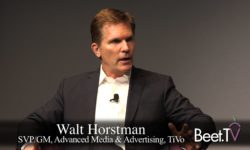
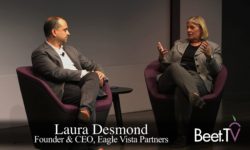
![true[X]’s Midha Revels In Vogue For Lower Ad Load](https://www.beet.tv/wp-content/uploads/2018/06/thumbnail-55-250x150.jpg)
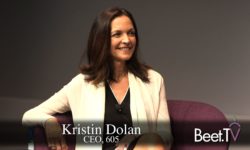
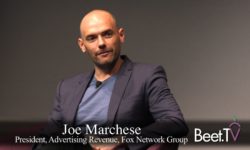

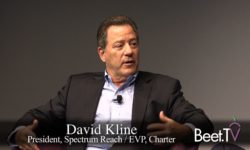







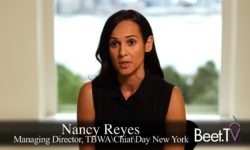
![The Next Frontiers For true[X]: Voice Activation, Engagement Ads In Live Events](https://www.beet.tv/wp-content/uploads/2018/06/thumbnail-25-250x150.jpg)




















